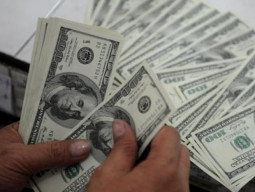
Be it developed, transitioning or a developing economy, the core of economic theory centres on optimal allocation of resources and economy led by market forces in free, fair and transparent manner.
While competition theory focuses on curbing anti-competitive practices by monopolists, cartelists and anti-competitive mergers to protect consumers, majority of the modern competition regimes are based on prohibitions such as abuse of dominance and cartelisation.
17 predictions for Pakistan’s economy in 2017
With proliferation of antitrust systems, one can witness an ongoing phenomenon of convergence of the substantive standards of antitrust/ competition law across the jurisdictions.
In the current scenario of globalised markets, the significance of antitrust policy is deemed to deliver beneficial effects at the micro as well as macroeconomic level.
Micro, macroeconomics
Micro and macroeconomics are often split into two disjunctive realms. In practice, however, they are interdependent disciplines and deal with numerous overlapping issues.
Macroeconomics provides tools to measure the economy as a whole, for example, in relation to the monetary and fiscal policies and how to fix actual/ potential problems.
The metaphor of ‘invisible hand’ identified by the legendary economist, Adam Smith, assumes a priori perfect markets implying many suppliers and consumers where no one can individually or collectively determine prices of goods or services.
The conceptual nebulousness of Adam Smith’s ‘invisible hand,’ ‘free market,’ ‘individual’s self-interest as a mean of collective good,’ and their ‘mutual interdependence’ were later synthesised by market economists as ‘Spontaneous Order’ by Friedrich Hayek and ‘Creative Destruction’ by Joseph Schumpeter.
The two ideas shattered the world of static economics circulating around a rational consumer and a logical market economy in favour of individual’s own rules and a constant process of creativity replacing the outdated products and the processes of production.
As much as the behaviour of a so-called rational consumer cannot be quantified, it is nearly impossible to ascertain the macroeconomic variables to compute the overall growth of an economy.
Whether it is an individual, a household, a firm, or an industry, when engaged in the production of goods and services of economic value, their aggregated output – affects the macroeconomic growth.
In the simplest, when inflation (a macro effect) is high, it would result in an increase in the cost of raw material, which, in turn, would affect the cost of goods and services, and change in consumer preferences and spending (a micro effect).
Competition policy
Alongside the principles of market economy, governmental restrictions in the form of legislative measures embodying protectionism, regulations, and subsidies impact a firm’s decision to invest in process and product innovation.
Through competition advocacy and control of anti-competitive practices by firms and review of legislative measures by the governments, competition authorities are empowered to make recommendation and take enforcement actions to remove impediments.
Where is the economy stuck?
Just like other developed systems of antitrust/ competition law, the preamble of Competition Act 2010 of Pakistan succinctly states the scope and object of the law as ‘An act to provide free competition in all spheres of commercial and economic activity to enhance economic efficiency’.
The preamble essentially provides for a macro mandate to the commission to control practices such as abuse of market power, cartelisation and agreements restrictive of competition and mergers.
Competition law and policy is a highly sophisticated fusion of economic and legal principles to gauge and correct the adverse effects of business practices on competition.
A competitive market structure advances optimal allocation of resources at the state and firm level in terms of lowering average variable costs of production and the competitive interplay between rivals.
At the macroeconomic level, economic equilibrium based on competitive process reduces strategic asymmetries to avoid market failures.
According to the World Bank, owing to its strategic endowments, development potential, opening to the market economy and the Chinese investment on the belt at the fulcrum of regions’ market, Pakistan’s economic turnaround is worth exploring.
It calls out for better coordination of industrial and macro policies and competition enforcement.
In Pakistan, the federal government has successfully demonstrated its commitment to keep the autonomy and independence of Competition Commission of Pakistan, since its inception.
While keeping in view the structural and macroeconomic control variable, competition authorities are mandated to eliminate barriers to entry and exist, unearth cartels, encourage investment and innovation.
Competition theory aims to ensure productive efficiencies and inclusive economic growth.
Robust competition enforcement through reasoned decisions and competition compliance by firms enhances competitiveness of products and prices within the economy resulting in innovation.
Pakistan to join top 25 economies by 2025, says Nawaz
Competition on process and product innovation transpires into macro effects in terms of more investment and growth which leads to creation of new jobs, increase in income, consumption, and positive effects on gross domestic product.
The writer is a member of the Competition Commission of Pakistan and has also served as director general at the commission
Published in The Express Tribune, April 3rd, 2017.
Like Business on Facebook, follow @TribuneBiz on Twitter to stay informed and join in the conversation.






1726054615-0/OpenAI-(2)1726054615-0-270x192.webp)











COMMENTS
Comments are moderated and generally will be posted if they are on-topic and not abusive.
For more information, please see our Comments FAQ